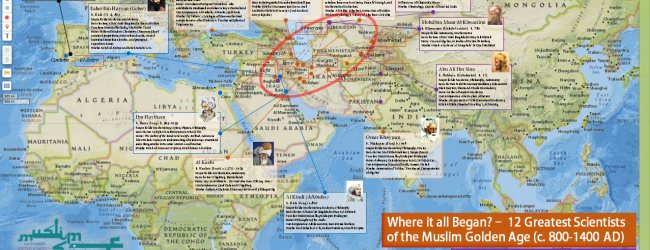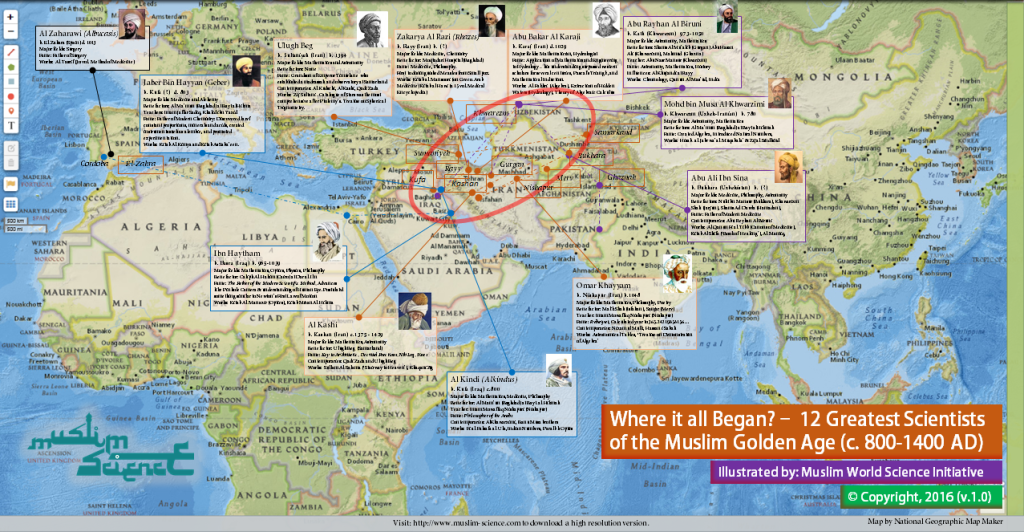
By: Editorial Team of localhost/muslim

I have long been theorizing about the Muslim Scientific Achievements during the Muslim Golden Age (c. 800-1400 AD) and had an inkling that most of the scientific achievements happened in the periphery rather than the center of the Muslim Empire(s). That is the idea of an Arabic Science is relatively weak or, at the very least, most of the Arabic-Muslim Science was done in collaboration with foreigners (Persians, Turkish, Spanish, Indian, or Central Asian people).
In order to test this hypothesis, I decided to plot the 12 Greatest Muslim Scientists of the Golden Age – among them the Father of Scientific Method, the Father of Surgery, the Father of Chemistry, the Father of Optics, the Father of Medicine, etc. etc. – on a geographical map. This is a modern day map so boundaries are not the same but the results are indeed striking…
My theories seems to hold. BUT an even more amazing fact emerges. 10 out of 12 of these Great Scientists are concentrated in 3 regions – Northern Iran, Southern Iraq, and Uzbekistan (which was part of Persian Empire then). There is a complete silence in other parts of the Muslim Empire (India, Ottoman, Egypt, and even Spain!).
In short, these Scientific Greats were nowhere near equally divided across the Muslim Empire. There are regions that are scientifically productive and those that aren’t. This is quite an amazing graph at least to me, though I should have expected something like this to appear but never thought it would be so skewed.
Obviously, we need to expand to more scientists (beyond these 12) and do more sophisticated analysis but here you have, version 1.0.